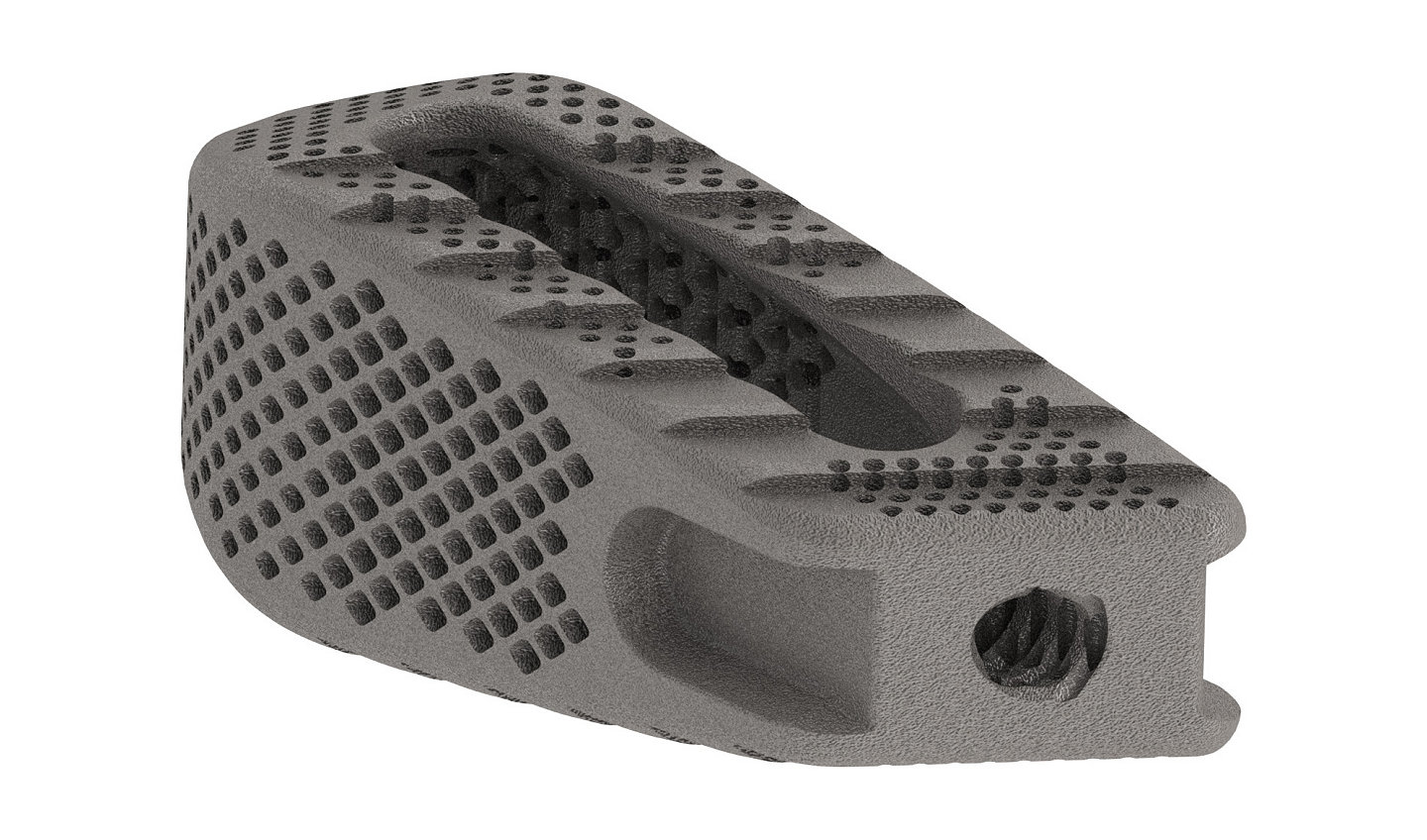Cascadia AN Lordotic-Oblique 3D
Interbody System
The Cascadia AN Lordotic 3D Interbody System includes a full range of unique and anatomically designed interbodies for multiple spinal applications. This system offers a comprehensive solution that is designed to restore disc height and sagittal balance in the lumbar spine. Lamellar 3D Titanium Technology incorporates 300-500 um longitudinal channels, which in conjunction with transverse windows, create an interconnected lattice designed to allow for bony integration. [1,2]

Features
- Roughened titanium surfaces have been shown to demonstrate increased protein expression in contrast to smooth titanium surfaces3,4,5
- Lamellar 3D titanium interbody with approximately 70% porosity1
- Reverse hourglass design allows for a large graft volume1
- Bulleted nose to ease insertion1
- 3-5 μm surface roughness to allow for direct bony ongrowth1,2
References:
- Test Report TR-1220.
- Loh QL and Choong C. “Three-dimensional scaffolds for tissue-engineering applications: Role of porosity and pore size.” Tissue Engineering Part B 19 (2013): 485-502.
- Karande TS, Kaufmann JM, and Agrawal CM. “Chapter 3: Functions and Requirements of Synthetic Scaffolds in Tissue Engineering.” Nanotechnology and Regenerative Engineering: The Scaffold, Second Edition. Ed. CT Laurencin and LS Nair. Boca Raton: CRC Press, 2014. Pages 63-102.
- Bobyn JD, Pilliar RM, Cameron HU, and Weatherly GC. “The optimum pore size for the fixation of porous-surfaced metal implants by the ingrowth of bone.” Clinical Orthopaedics and Related Research 150 (1980): 263-270.
- Karageorgiou V and Kaplan D. “Porosity of 3D biomaterials scaffolds and osteogenesis.” Biomaterials 26 (2005): 5474-5491.
WB-12_Rev-1_23969
